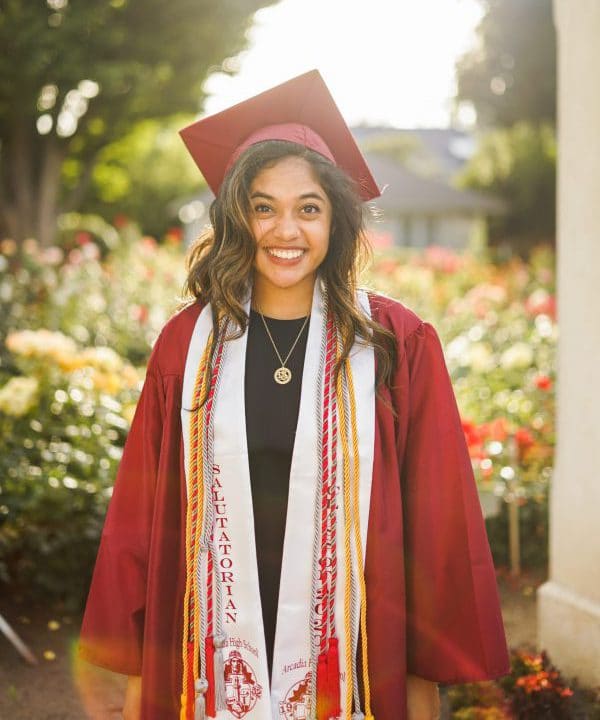Blind and visually impaired students face different and unique challenges when it comes to higher education. Though it may be difficult, achieving an undergraduate or even a graduate degree is not impossible. There are many organizations and colleges that are dedicated to making higher education a reality to the visually impaired. Whether it’s providing electronic aids, specialized computers or readers, many schools are going above and beyond to make sure the visually impaired obtain the best education possible.
To show what’s available to college-bound students, we’ve compiled a list of current technologies and things universities are doing to accommodate the learning of visually impaired students.
Visual Impairments
Before we dive into talking about resources colleges have available for visually disabled students, it’s useful to define the specific areas of visual impairment because vision falls into more categories than total blindness. Visual impairments are classified into 3 specific areas, which are based on an individual’s functional limitations and how those impact their day-to-day activities.
- Low Vision: Low vision is uncorrectable vision loss that interferes with daily activities. Most eyecare professionals use the term “low vision” when describing permanently reduced vision that cannot be corrected with regular glasses, medicine, or surgery. Low vision individuals are clinically defined as having a visual acuity of 20/70 or less–with correction.
- Legally Blind: Legal blindness is a definition used by the United States Government to determine eligibility for vocational training, rehabilitation, schooling, disability benefits, low vision devices, and tax exemption programs. Legal blindness in the US means visual acuity of 20/200 or worse with the best possible correction, or a visual field of 20 degrees or less.
- Total Blindness: Total blindness is when a person has a complete lack of light perception and form perception. Few people are completely without sight today. 85% of all individuals with sight impairment have remaining sight. Only 15% are totally blind. People with total blindness have a visual acuity worse than 20/400 with the best possible correction, or a visual field of 10 degrees or less.
Technology for the Visually Disabled
Technology has removed barriers to education and employment for visually impaired persons. Students are able to do homework, research, take tests, and read books due to advances in technology. Here are just a few of the technological advances that aid visually disabled students in their schooling:
Braille Displays
These devices display information on a computer screen by raising and lowering combinations of braille pins. The device sits underneath the keyboard and refreshes in real time as the cursor moves across the screen.
Braille Printers
Braille printers are now available to translate printed text into Braille format with the use of specialized paper.
Braille Translators
These devices translate information from a document into a Braille file. That specific information can then be read from a Braille display, device, or sent to a Braille printer.
Personal Data Assistant
Also known as a “Braille Notetaker,” this device can be used with Braille or typewriter keywords. Current additions also have calendars, web browsing, word processing, and other features.
Screen Readers
These programs give the user full control over reading and interacting with their computer. Jobs Access with Speech (JAWS) is one of the most widely used screen-reading programs. It is able to help visually disabled students use everything from MIcrosoft Office to Google Chrome.
Screen Magnification and Large Print Keyboards
Screen magnification systems allow users to enlarge media, graphics, and text on computer screens. ZoomText is a screen-reading and magnifying program that gives students visual and auditory translation for what is on their computer screens. Large print keyboards are also available for visually disabled individuals who need larger keys and color displays that are easier to see.
Text-To-Speech Software
This technology turns electronic text into audible speech for its users.
College and the Visually Impaired
There are nearly 2,000 accredited 4-year colleges in the United States that offer Bachelor’s degree programs. Many of these universities offer traditional and unique technology to aid with visually impaired learning. Here are a few examples of what colleges across the nation are doing to accommodate blind and visually disabled learners:
Note Takers and Readers
Note takers are a great way for visually impaired students to get quality notes from their lectures. Students assigned by the ODS (Office of Disability Services) take notes for disabled students using carbonless notebook paper; these notes can then be converted into large print for later use. Readers are another great resource for visually disabled students; readers can read directly to blind individuals while they are present or on a recording device for students to listen to at a later time.
Recordings of Class Lectures
Many instructors can get wary about having their lectures recorded for fear of ruining future publishing plans; however, most professors are fine with recorded lectures as long students ask. An individual may need to sign an agreement provided by the ODS prior to recording lectures.
Braille Editions of Books
Visually impaired students may rely on texts in alternative formats like large print or Braille. These large print or Braille formats are essential to make many subjects including math, sciences, and languages accessible to students with visual disabilities. Books can be converted, but may take up to a month or two to translate. A small number of books may also be available in electronic formats to use.
Test Taking
This is a common area for which the visually impaired need assistance. Students are required to take the same tests, but in a non-visual format. Oral exams are one way a professor might give a test to a student; instructors may also use their TAs to administer the test. Another option is to have the questions recorded in audio format. The student in turn will record their answers in audio format for the instructor to grade. Special computers with adaptations for visual impairment may also be available for students to take a test or write a paper.
For students with low vision, universities can provide enlarged formats of tests and examination sheets to accommodate student’s testing. When it comes to time limits, visually impaired/blind students may also be able to receive more time to complete tests and assignments in order to complete their work as best they can in an adequate amount of time.
Illustrations, Models, and Technology
Students with visual impairments can use raised line drawings of diagrams, charts, illustrations, maps, or even three-dimensional models of organs and organisms to better understand their subject matter. Modern technology has made available other types of equipment to help with learning like talking calculators, speech time compressors, reading machines, voice recognition and other kinds of computer software (as mentioned earlier).
Colleges have been evolving more than ever to be accommodating to those with special needs. New assistive tools are being developed and implemented throughout major universities in the United States to aid students in their learning. While many of these technologies are useful, they will only take a student so far; to make the most out of an education a student needs to be proactive throughout college to get the best education and experience possible. Students can accomplish this by choosing a college with quality resources and support services, going prepared to class with all the assistive technology they need, and becoming involved in campus and community activities.



